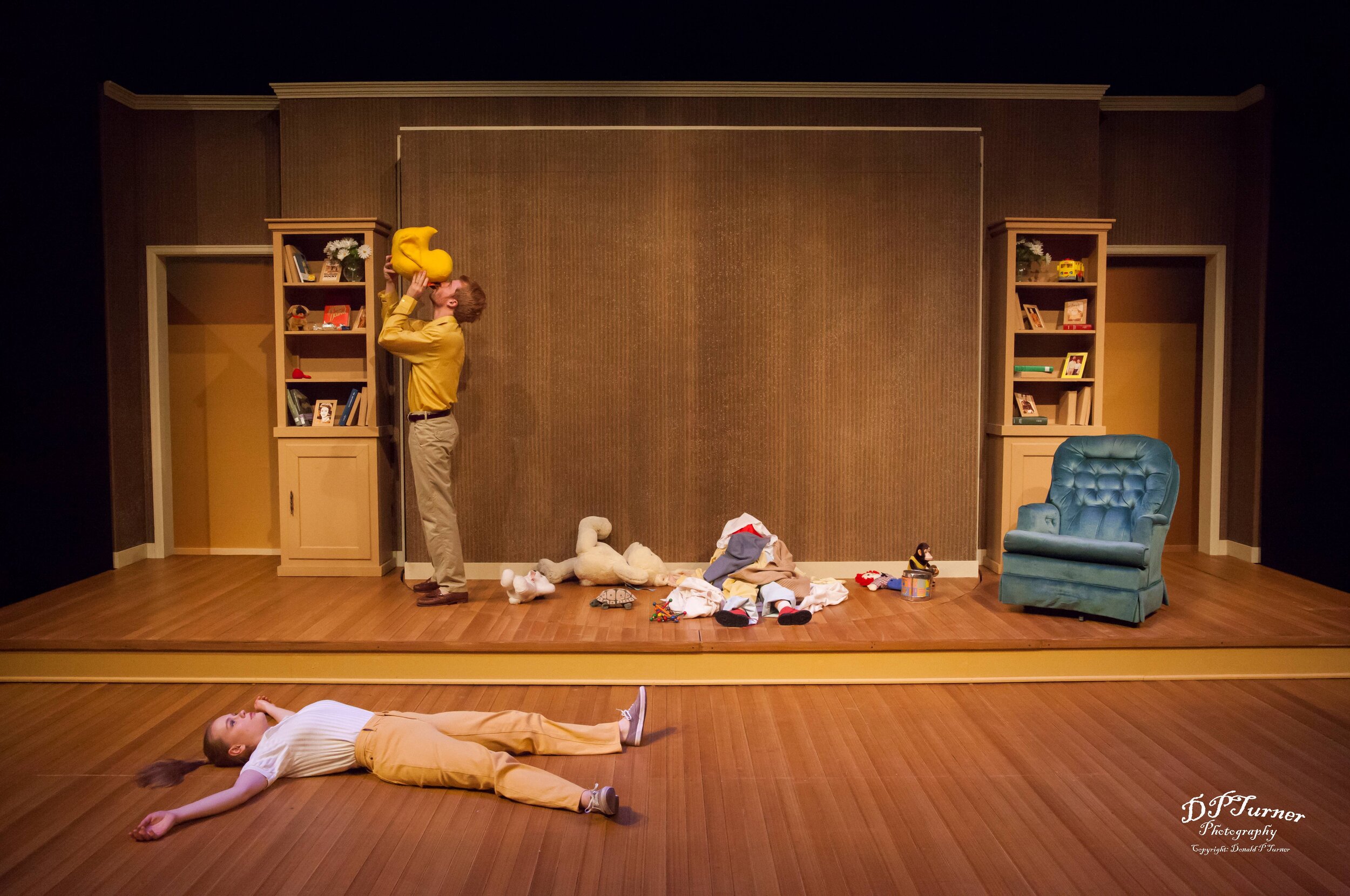
“How dare they treat me like that? What’s the matter with them! I didn’t ask to be brought into the world. If they didn’t know how to raise a child, they should have gotten a dog; or a kitten — they’re more independent — or a gerbil! But left me unborn.”
- Daisy

Helen, John, and Nanny are awoken by an intruder

Helen prays for deliverance, Nanny obliges

Helen watches as her son runs into traffic

Daisy considers their existence, identity, and struggles with family.

Helen and John try to cope.

Things escalate with Cynthia
Baby with the Bathwater, by Christopher Durang
Director: Patrick Konesko
Scenic Design: Scott Tedmon-Jones
Costume Design: Darrell Waggoner
Lighting/Sound Design: Jason Banks
Production Stage Manager: Steph Young
Photography: Don Turner/DP Turner Photography
Approach:
Baby with the Bathwater offers a searing and hilarious look into one family’s dysfunctional attempts to raise a child—or indeed to conform to anything approaching “regular” life or a “white picket fence” sort of American nuclear family. The play tracks the journey of a child from infancy to marriage and asks the question, “can we escape the good intentions of our parents or do we pass on our quirks, habits, and damage onto the next generation?” At the heart of this madcap adventure is a debate that continues to rage in society today: Which is stronger, nature or nurture?
This script offered incredible stylistic challenges for performers, designers, and director alike—this type of absurd comedy requires a different approach and aesthetic sensibility than more “conventional” comedies and I was excited to take on that challenge. I was also interested in the way that Baby with the Bathwater manages to balance absurd hijinks with a more heartfelt and sincere look at family life, childhood, identity, and society. What is “normal” for one family might seem ridiculous to another, and many of us have contested relationships with our parents and the way they chose to raise us. This play offers a unique perspective into this fundamental conflict that so many of us share.
In that the play was written in 1984, it is simultaneously trail-blazing and also hopelessly out-of-date when it comes to contemporary discussions and nomenclature regarding issues of gender identity. As such, the cast and I devoted considerable attention to how we were exploring and shaping Daisy’s journey through a reliance on modern sensibilities and terminology. This helped us target jokes that we could take a more sincere approach with vs those that we wished to “lean into.”